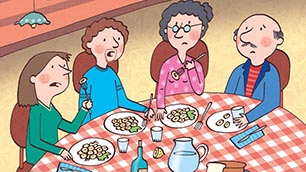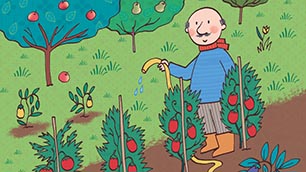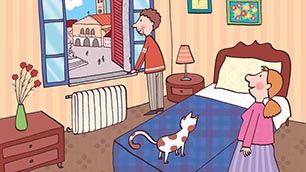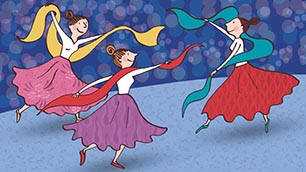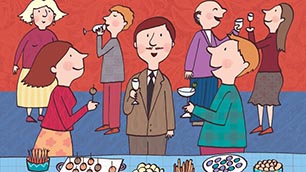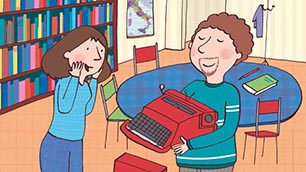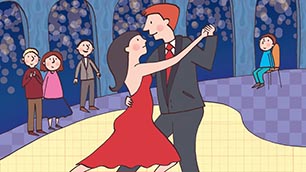| Silvia: | Connor, let's start this lezione di grammatica italiana by analyzing the sentence you got from La Dolce Vita di Federico Fellini. Would you read it for me? |
| Connor: | Sì, certo! "Tu sei la prima donna del primo giorno della creazione, sei la madre, la sorella, l'amante, l'amica, l'angelo, il diavolo, la terra, la casa..." |
| Silvia: | OK, let’s take "amica", which is a feminine noun, as our first example. |
| Connor: | Sylvia è l'amica. |
| Silvia: | Esattamente, Sylvia è l'amica di Marcello. |
| Connor: | Io sono l’amica of Marcello. |
| Silvia: | Well, just keep in mind that amica is a feminine noun, and in italiano all nouns, nomi, have a gender. |
| Connor: | So, how would I say amica if I were to talk about myself? |
| Silvia: | Amico. |
| Connor: | Io sono amico of Silvia. |
| Silvia: | Very good! |
| Connor: | How do I know whether a noun is masculine or feminine? |
| Silvia: | Well, è semplice. By looking at the final vowel of a noun you’ll know the gender and number of the noun itself. |
| Connor: | With no exceptions? |
| Silvia: | With some exceptions... but let's focus on the general rule, so everything is clear. |
| Connor: | Sì. |
| Silvia: | Amico ends with an "o" and that’s how you know it is a masculine noun. To make it plural, you’ll have to drop the final vowel and replace it with an "i", the English "i (ai)". |
| Connor: | Amici? |
| Silvia: | Molto bene! Nouns ending with an "a" are feminine and to make them plural, you’ll have to replace the "a" with an "e". Let’s take the parola sorella. Would you like to try? |
| Connor: | Sorella becomes sorelle. Voi siete sorelle. |
| Silvia: | Bravo! In italiano, we also have nouns ending with "e", which can be either masculine or feminine. In their plural form, these nouns replace “e” with "i". |
| Connor: | And the example is? |
| Silvia: | Let me see... la parola amante, lover, can be either feminine or masculine… And its plural form is... |
| Connor: | Amanti! Loro sono amanti. |
| Silvia: | Sì, molto bene. |
| Connor: | It looks like this film is inspiring our lezione! |
| Silvia: | Sì! So... let's talk some more about adjectives. |
| Connor: | Love them! |
| Silvia: | Perché? |
| Connor: | Because they add romanticism to a scene... |
| Silvia: | Let me give you some tips then, so you can use them better! Adjectives, just like nouns, are number and gender-sensitive. They always agree in gender and number with the nouns they describe… and, to do so, they change their final vowel, applying the same rules we saw with nouns. Adjectives are very important in everyday conversation. The more you practice, the closer you’ll get to mastering la lingua italiana! |
| Connor: | Molto bene, as you say. |
| Silvia: | You already know a few nouns, we learned some adjectives... try pairing them up now! |
| Connor: | Ragazza bella… regista bravo… film romantici... io sono tired! |
| Silvia: | Tu sei stanco. |
| Connor: | Io sono a studente stanco. |
| Silvia: | But you want to learn. |
| Connor: | I do! And I want to go to Italy and live La Dolce Vita. |







